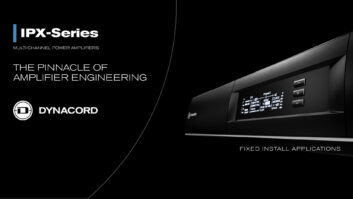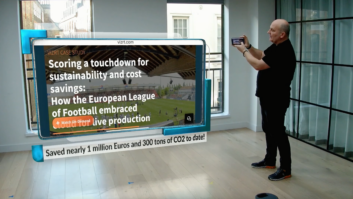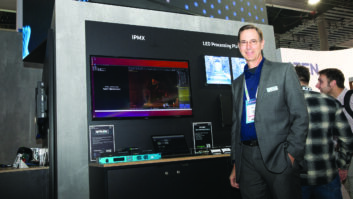
A white paper issued by RH Consulting has helped to add clarity to the often nebulous world of voice alarm. Paddy Baker interviewed the paper’s authors, Roland Hemming and Lauren Rogers, to find out more. What kinds of EN54-related questions have clients been coming to you with? Roland Hemming: We have clients at all parts of the supply process including manufacturers, distributors and installers. Compliance has been a major subject of conversation with almost all of them. The question mainly comes down to ‘How will this affect me?’ I understand that, to clarify the situation around EN54, you’ve conducted a back-to-basics review of the European Construction Products Directive. So, to start, what is it? Lauren Rogers: The CPD is a piece of EU legislation that sets out six essential safety requirements for systems used on construction projects. It has been around since 1991. What was the process you went through to find out about the legislation? LR: It was long and laborious. We set aside any pre-conceived ideas. We went back to 1991, looked at the CPD, what it meant and how it applied. We then followed the story of mandates, creation of standards committees, guidance notes and the meaning of harmonised standards. At each stage we would go off on tangents to ensure we reached dead ends on particular issues. We discussed our initial findings with people and when they raised a question we looked for official documentation that either supported or refuted that view. We must also thank Steve Jones of SJ Associates, who was discussing the kit approach a long time ago. What, in the simplest terms, does the CPD require integrators to do in the context of voice alarm installations? LR: It’s very simple. You just have to prove that you are complying with the six essential safety requirements. Compliance might be by using a harmonised standard, such as EN54-16. But standards are not laws, they are recommendations. The law requires compliance with the CPD. So, is using equipment that conforms to EN54 the only way of meeting the requirements of the CPD? LR: No. We have had to comply with the CPD since 1991, long before EN54 came about. There have always been several ways of complying with the Directive. Over the years harmonised standards have been created which give another method of compliance, but the earlier methods have not gone away. What is a kit in the context of EN54? RH: Strictly speaking a kit doesn’t exist in EN54-16. That standard sets out requirements for a VACIE [voice alarm control and indicating equipment] – normally an ‘all-in-one VA system’. A kit is a collection of components that don’t have to be type-tested and are assembled in a bespoke way to form a voice alarm system. The kit method is defined in an EU guidance note concerning the CPD, first written in 1997. In many respects a type-tested component and a kit are the opposite of each other, but they both can do the same thing. The EU regards a kit as the ‘equivalent of a construction product’. It’s not always that simple. EN54-16 allows for multiple-rack, distributed systems to be tested. But you can still use kits. When you look at the clauses in EN54 about these more complex systems there is no clear definition, they say: ‘The exact test configuration shall be agreed between the test laboratory and the manufacturer’. It’s important to note that in the legal responses to the European Commission, EN54-16 specifically excludes kits from its scope. Kits are another means of compliance with the CPD, separate from any harmonised standard. In which circumstances is it acceptable to use a kit? RH: There is no hard and fast rule. Our work on this came about from dealing with large and complex systems where it was evident that type-tested components weren’t appropriate. In theory any voice alarm system could use a kit if you justify properly why you have taken that approach. How is fitness for purpose demonstrated if an integrator uses a kit rather than type-tested equipment? RH: In exactly the same way as every voice alarm system has to prove compliance. You have a risk assessment setting out how it is a safe system. This should have references to any standards or legislation. The equipment side is just one part of voice alarm, you still have to comply with the performance standards and codes of practice. To assist consultants and installers we have included some sample wording in our white paper that they can use in their project documentation to explain their use of kits. Isn’t this just a way for people to wriggle out of compliance with EN54? RH: Not at all. It is about compliance with the law – the Construction Products Directive. For certain types of project, using EN54-tested equipment may actually be less safe and increase the risks. This is because the type-tested systems, by definition, have to be quite limited in how they operate. If you have a building requiring a large number of zones or high power or a great deal of flexibility, then this is difficult to achieve, except by using a bespoke system. Trying to use type-tested equipment for these applications can introduce unnecessary complication and may lead you to a result that won’t work as well. You’ve published your findings in a white paper. Why did you decide to make it freely available? LR: We normally do this type of work privately for our clients, advising on all types of issues. Our work involves a lot of research and gathering data. It is important to give people something factual rather than offering just an opinion – anyone can do that. But on this occasion the findings are so important that we are giving this to the industry. RH: It’s a simple fact that many people are having a great deal of trouble conforming to EN54 parts 4, 16 and 24. When you get down to the detail of having to comply, it is often very difficult to do. If the project falls outside standard requirements then there isn’t the tested product to do the job. Some test houses are having problems dealing with unusual applications. One recently suggested cutting a large loudspeaker in half so it could fit inside its test chamber. Another wanted to break up a large system into parts, effectively turning it into a kit anyway. What has the reception been to your white paper so far? LR: Voice alarm is a contentious issue. There isn’t a ‘correct way’ as every building is different. The only point of agreement is that we need to make buildings as safe as possible. I’m sure there will be some detractors, but we ask them to cite legislation to back up their view as that is what we have done. However the chairman of the EN54 working group agrees with our conclusion, as does the chairman of the TC 72 committee above that. PLASA have confirmed that they agree and will support their members using kit systems. A few manufacturers have already been in touch and have supported our conclusion, they have said it adds clarity to the subject, especially for those involved with more complex systems. RH: Above all else, the point we make is that people shouldn’t be slavishly saying that systems have to be EN54 compliant: this is not correct and sometimes may actually lead to buildings being less safe. IE The white paper is available from the RH Consulting website. www.rhconsulting.eu







